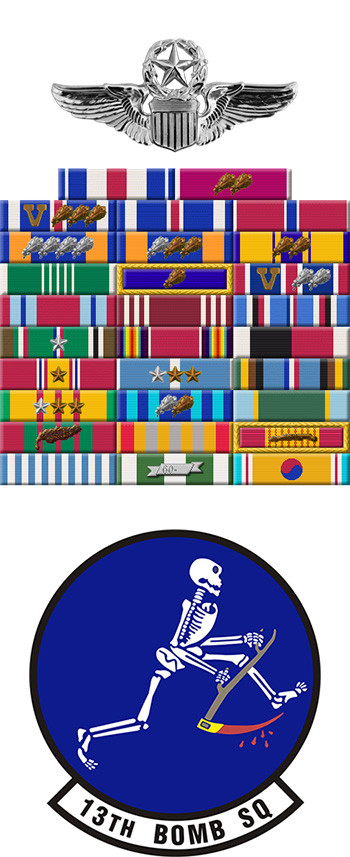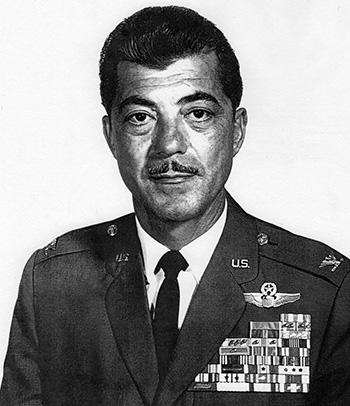
|
Domenico A. Curto |
 |
|||
| Rank, Service | ||||
Colonel O-6, U.S. Air Force |
||||
| Veteran of: | ||||
|
||||
| Tribute: | ||||
Tony Curto was born on April 3, 1923, in Reading, Pennsylvania. He enlisted in the U.S. Army Air Forces on August 18, 1942, and entered the Aviation Cadet Program for pilot training in February 1943. Curto was appointed a Flight Officer and awarded his pilot wings on November 3, 1943, and was later commissioned a 2d Lt in the Army Air Forces on June 1, 1944. After completing B-26 Marauder combat crew training, he deployed to Italy with the 432nd Bomb Squadron of the 17th Bomb Group from January to September 1944, and then to various bases in France from September 1944 to June 1945. Lt Curto served on occupation duty in Europe after the war ended, and returned to the United States in September 1945, leaving active duty and entering the Army Reserve on December 12, 1945. He returned to active duty in the U.S. Army Air Forces on June 30, 1947, and served as an Air Inspector and Instructor Pilot before deploying to Japan in August 1950. Capt Curto served as a B-26 Invader pilot and as Deputy Commander of the 13th Bomb Squadron, as well as serving as Operations Officer of the 3rd Bomb Group, while flying combat missions in Korea from August 1950 to February 1952. His next assignment was as a B-29 Superfortress pilot and Executive Officer with the 7th Radar Calibration Squadron at Griffiss AFB, New York, from April to August 1952, followed by service as Commander of the 1st Radar Calibration Squadron at Griffiss AFB from August 1952 to March 1954. Maj Curto served as Commander of the 4713th Radar Evaluation Flight at Griffiss AFB from March 1954 to December 1956, and then as Operations Officer of the 420th Air Refueling Squadron at RAF Sculthorpe, England, from December 1956 to November 1958. His next assignment was as Atomic Operations Officer on the staff of Headquarters U.S. Air Forces in Europe at Lindsey AS, West Germany, from November 1958 to December 1960, followed by Armed Forces Staff College at Norfolk, Virginia, from January to July 1961. Col Curto served as an Operations Staff Officer with Headquarters U.S. Air Force at the Pentagon from July 1961 to June 1965, and then as Commander of the 6th Fighter Squadron at Eglin AFB Auxiliary Field 9, Florida, from June to December 1965. He served as Deputy Commander for Operations of the 1st Air Commando Wing at England AFB, Louisiana, from December 1965 to March 1967, and during this time he deployed to Southeast Asia from April to May 1966, and from June to August 1966. Col Curto's next assignment was as Vice Commander of the 14th Air Commando Wing at Nha Trang AB, South Vietnam, from March 1967 to May 1968, and then as Group Commander for Air Force Officer Training School at Lackland AFB, Texas, from May 1968 to June 1971. He served as Chief of Staff with the 1131st Special Activity Squadron in Bangkok, Thailand, from June 1971 to July 1973, and then as Deputy Commander for U.S. Military Assistance Command Thailand in Bagkok from July 1973 to January 1974. His final assignment was as Center Inspector General of the 3700th Air Base Group at Lackland AFB from January 1974 until his retirement from the Air Force on July 1, 1974. Tony Curto died on November 13, 1998, and was buried at Arlington National Cemetery. Col Curto flew 76 combat missions during World War II, 69 combat missions in Korea, and 195 combat missions in Southeast Asia, for a total of 340 combat missions flown in 3 wars. |
||||
|
||||

